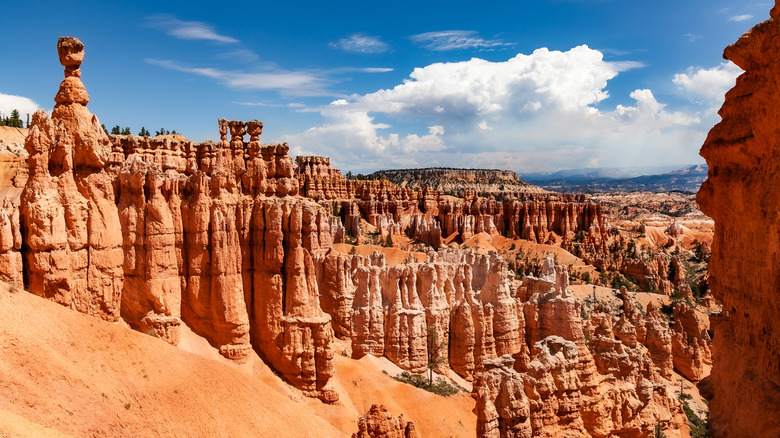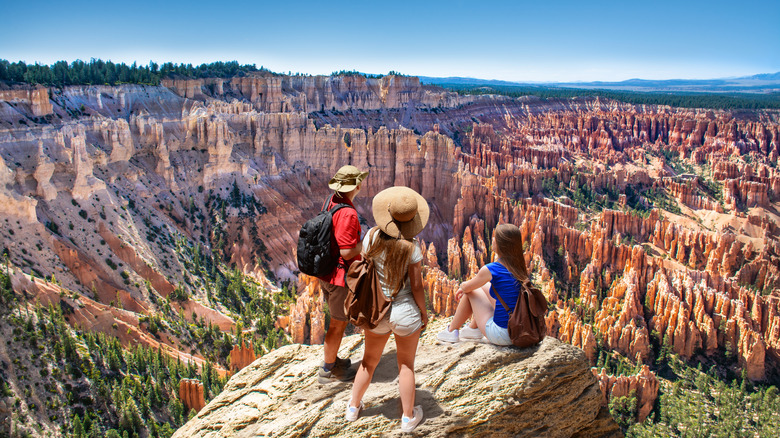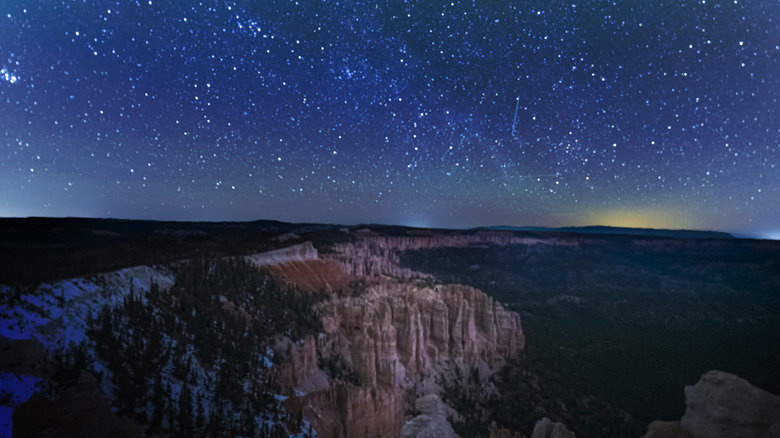Utah's Otherworldly National Park Stuns With Its Impressive Landscapes
Southern Utah is a place with desert scenery so enchanting and unique that it feels like stepping into another world. The state itself is home to five national parks, each with its unique charms. From the vibrant views of Canyonlands National Park to The Narrows river canyon in Zion National Park, each of the "Mighty Five" (as they're often called) boasts singular attractions that let you know why they have been carefully preserved.
In the case of Bryce Canyon National Park, it's "hoodoos." These mushroom-like rock pillars are its signature feature, with tens of thousands standing tall above the desert like sentinels. Bryce Canyon has the largest collection of these formations on the planet, which draws visitors from far and wide who come to take in their otherworldly forms.
That said, there is more to do at Bryce Canyon than gawk at vivid spires of rock. The park is also home to natural amphitheaters, pine forests, and some of the darkest skies in North America, making it the perfect place for stargazing. Bryce Canyon is one of the national park system's most sparkling gems, and despite the fact that April through October is its busiest time, the winter also offers its own charms, with far fewer people, solitude, and often a serene dusting of snow.
Soak up the surreal wonder of Bryce Canyon
Established as a national park in 1928, Bryce Canyon encompasses 35,835 acres, making it one of the smaller national parks in the country. However, what it lacks in size it makes up for in desert scenery that will take the air from your lungs. Expect narrow ravines, wild eroded shapes, wind-carved nooks, and a magical ambiance that seems to emanate from the landscape itself. You can also find stands of ponderosa pine, juniper, fir, spruce, and pinyon trees, along with high meadow ecosystems.
Bryce Canyon's unique geology is the result of its location. Situated at the edge of the Southern Utah's Paunsaugunt Plateau, the wind and rain have carved out these gnarled and majestic formations over millions of years. The best way to experience the full scope of what the park has to offer is to look down from any of the four major viewpoints along the canyon's rim. Sunrise Point offers vistas over the amazing Bryce Amphitheater, while Sunset Point looks out over some of the park's most famous formations such as the massive Thor's Hammer hoodoo and the cliffs called The Temple of Osiris. Inspiration Point provides visitors with the largest amount of hoodoos in one viewing, while Bryce Point allows an eagle-eyed view of mystical landscapes from 8,304 above sea level.
All of these viewpoints are accessible by car and can be visited as part of the Southern Scenic Drive. This 18-mile route is the best way to experience Bryce Canyon National Park from the comfort of your car, with Agua Canyon, Natural Bridge, Yovimpa Point, and Rainbow Point being the highlights.
Hike, camp, and stargaze in Bryce Canyon
Perhaps the best way to experience the magic that Bryce Canyon has to offer is by lacing up your shoes and hitting the trail. Popular routes include the Navajo Loop and Queens Garden Trail — a 2.9-mile trek that offers up-close views of some of the park's biggest attractions — while the 8-mile Fairyland Loop follows the rim and also dips down into the canyon. The Riggs Spring Loop is a backcountry route that heads through spruce, fir, and bristlecone forests, while the Rim Trail is a 5.5-mile walk from Bryce Point to Fairyland Point with nothing but canyon views the whole way.
There are only two established campgrounds in Bryce Canyon National Park: North Campground and Sunset Campground. These are popular sites that require reservations in advance. You can also get a room at the historic Bryce Canyon Lodge. Opened in 1925, this old-school lodge is on the National Register of Historic Places and features 114 rooms, along with cabins and a dining room, and is just a short walk from the Bryce Amphitheater.
Given its remote location, pristine air, and elevation, Bryce Canyon is a stargazing hotspot. After sunset, the cosmos come alive in a dazzling tapestry of shimmering stars. In 2019, the park was awarded International Dark Sky Status and today hosts around 100 astronomy programs a year, where astronomy rangers and volunteers celebrate the park's amazing moonlight vistas. Bryce Canyon is about equidistant from Salt Lake City and Las Vegas. The drive is roughly four hours from either city's airport, and may take longer in the winter, when conditions in the high desert can get slick and snowy. To make the most of your time in the Beehive State, consider taking this scenic unforgettable road trip to Utah's five national parks.


